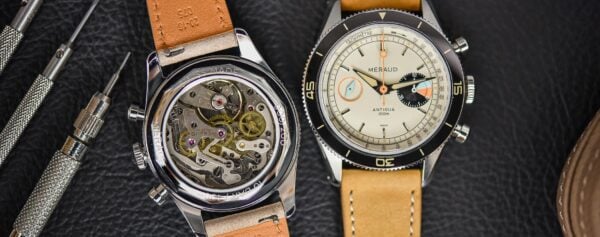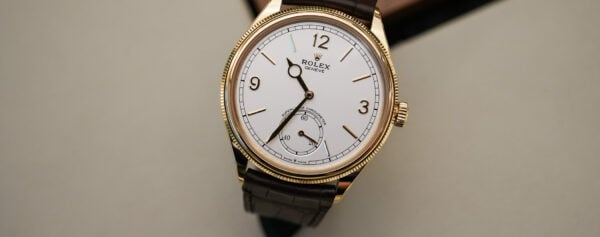While considering how to describe this new watch best, I got sidetracked thinking about how many vintage-inspired and retro-looking contemporary editions were so popular and unanimously accepted. What constitutes their appeal? Why do we keep saying how beautiful they are? Marketing efforts and sentimental issues aside, one train of thought suggested that the watchmaking business that flourished in the 1960s and the 1970s produced wristwatches with similar designs, and in large quantities, imprinting in our collective memory images of beautiful objects – watches, beautiful by default, for what they represented. We, the people, carry the picture of this ideal watch design in our heads involuntarily. And when we see a contemporary, well-executed watch that immediately recalls the blueprints, we issue the “beautiful” tag. I do so after spending some time with the new Méraud Antigua Chronograph.

Méraud Watch Co. is from Belgium and is one of many Kickstarter start-ups with a passionate person behind the idea of becoming an independent watchmaker. Méraud and its owner, vintage watch collector Stijn Busschaert, is one of the few making it. The Méraud Bonaire series, three versions of a good-looking retro dive watch launched in 2018, are all sold out. February 7th marked the start of pre-orders for the new Méraud Antigua Chronograph, with two dial options powered by restored, new old stock (NOS) Landeron 248 movements.
Landeron 248 Inside
The Landeron 248 movement is an integral part of the overall appeal of this charming Méraud Antigua Chronograph, and since a lot of our attention is drawn to this, let us spend some time with the movement first. The idea of making a hand-wound chronograph with a design rooted in the 1960s took a lot of work to implement. Stijn Busschaert says it took him two years to find the Landeron movements needed to carry out the plan and talks of the “thrill of the chase“.
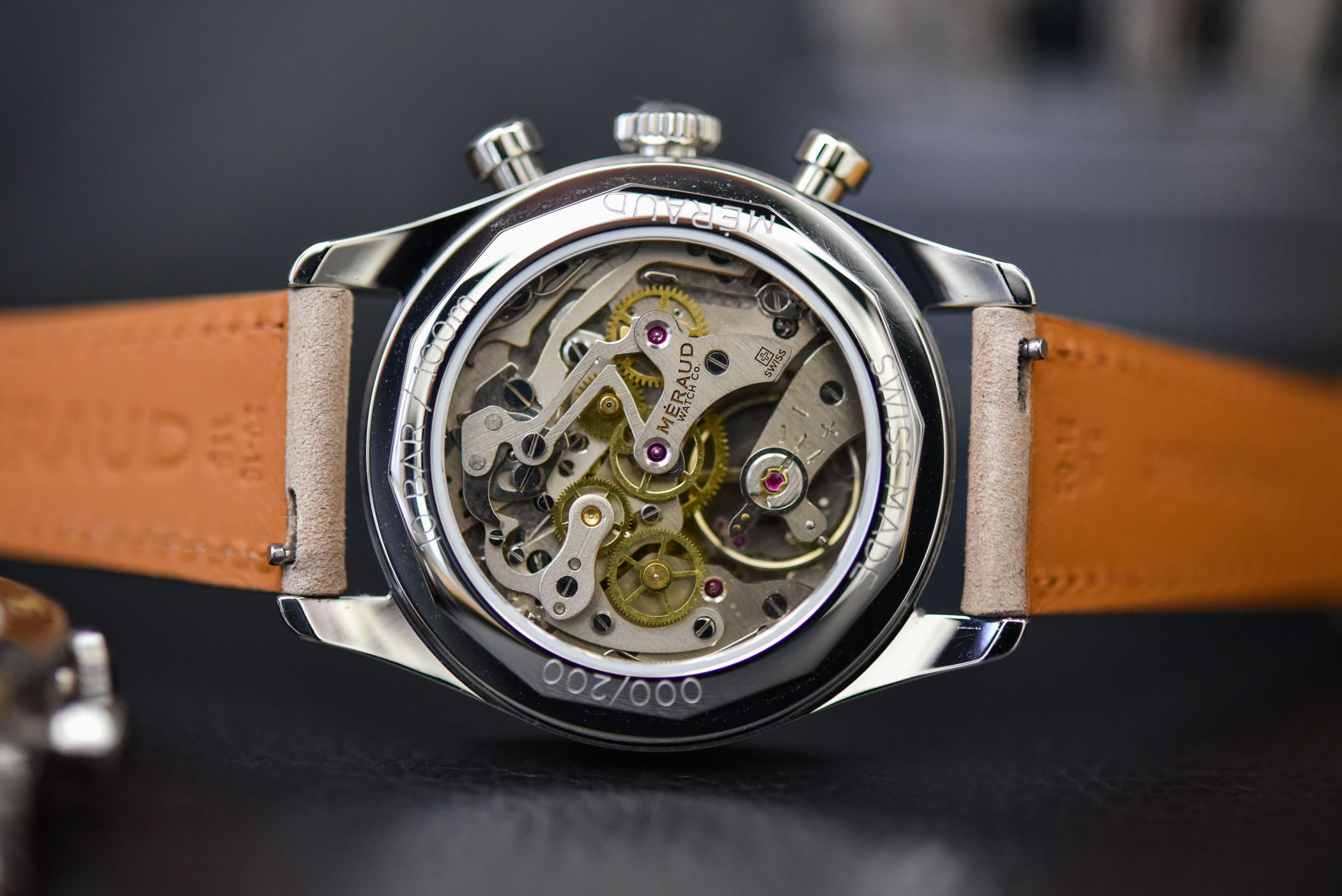
The Landeron 248 is not your usual “grail calibre” as the Lemania 231 would be. It’s far more mundane. Between 1937 and 1970, Landeron produced over 3.5 million examples of these movements. They pop up from time to time, used in heritage and vintage-inspired collections (the Cuervo y Sobrinos Historiador Landeron, to name one). Still, the Landeron 248 is a well-appreciated movement nevertheless.
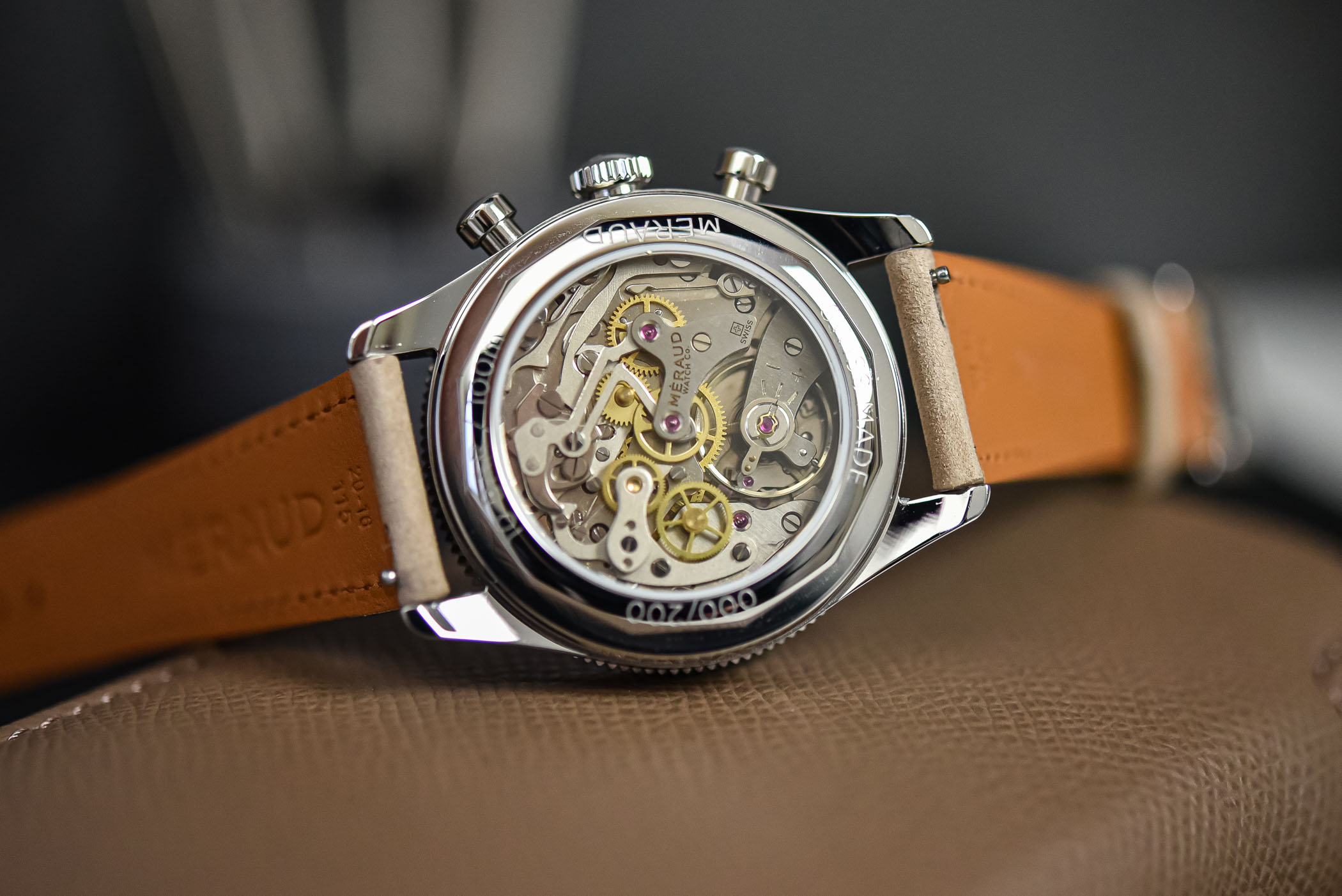
Le Landeron is a place in the Canton of Neuchâtel in Switzerland where a company was formed in 1873 under the name Charles Hahn & Cie. It was a successful family business, producing award-winning watches and movements, and by 1923 was an experienced producer of chronographs. It also happened that Charles Hahn & Cie. would become a founding member of Ebauches SA in 1926 (later known as ETA) Landeron was producing column-wheel chronograph movements, like the calibre 11 and calibre 13 and the exceptional Calibre 39. And it also was the primary supplier for Breitling and filled orders for military and aviation. Column-wheel chronographs were expensive and fragile, making the military not so happy. An effort not to lose a vital client led Charles Hahn and Marcel Dèpraz to a new cam-switching technique.

The first cam-actuated Landeron Calibre 47 had three pushers – one to start, another to stop, and a third to reset. This movement was improved to become the two-pusher calibre 48, and the Landeron 48 series became one of the most famous chronograph movements ever. The Landeron 248 is yet another improvement and fits nicely into the Méraud Antigua Chronograph philosophy. Turn the Antigua over, and the Landeron 248, engraved with the Méraud Watch Co. logo, is on display for your viewing pleasure. Turn it back and enjoy the rest of the Méraud Antigua Chronograph.
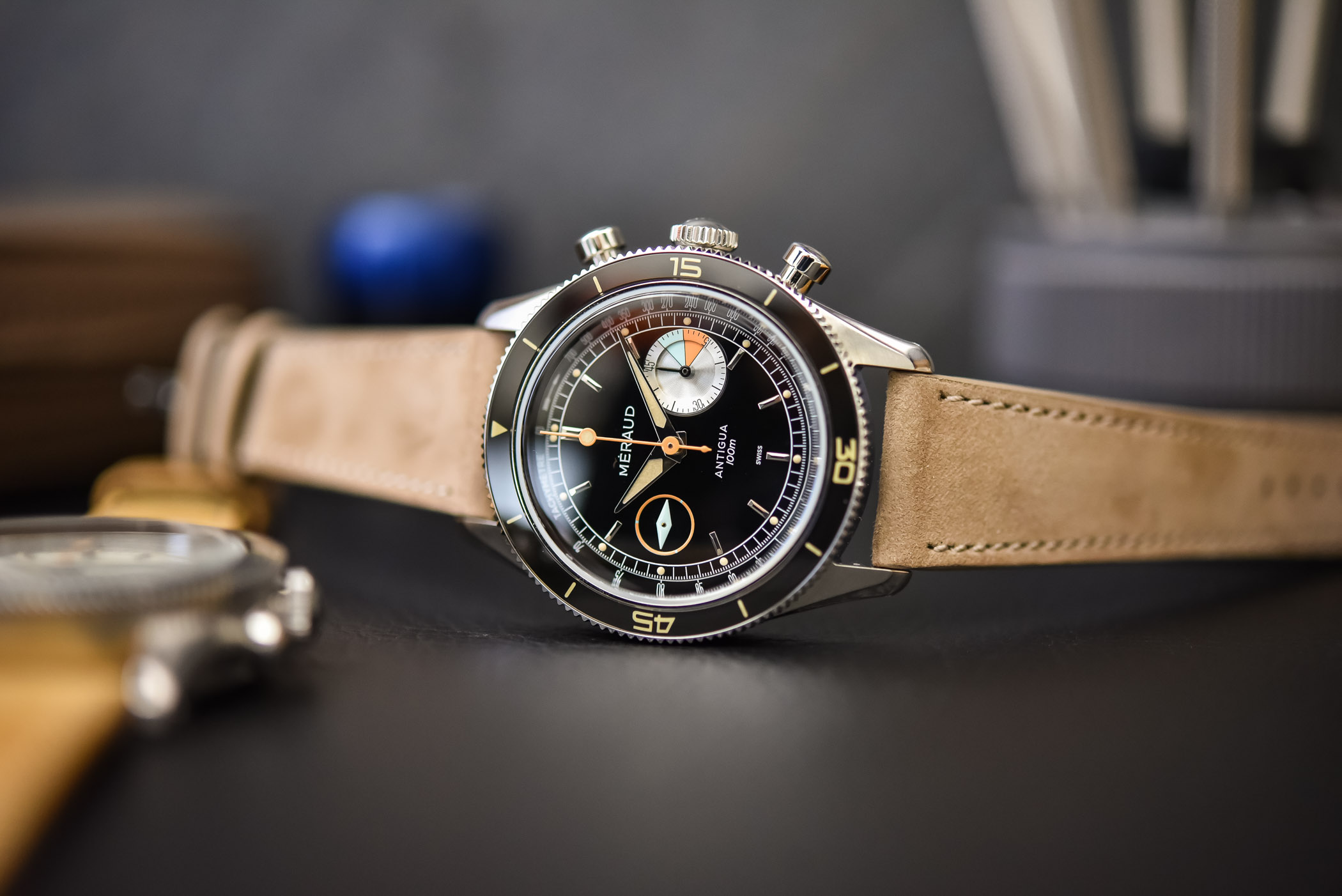
The Antigua Chronograph is presented in a 39mm stainless steel case, measuring 40mm at the bezel. The case features different finishing techniques, including linear, circular, high-polished and brushed finishes. The drilled lug holes and a dodecagonal caseback remind me of the design solutions already seen in the Bonaire edition. The Antigua is not a thin watch, with a 13.50mm height, but it seems slimmer. The size allows you to easily operate this time instrument when on the wrist – pushing the buttons and playing with the rotating bezel – with ease. The bezel edge is polished and has a scratch-resistant black sapphire “bakelite-like” insert with luminous numerals and markers.
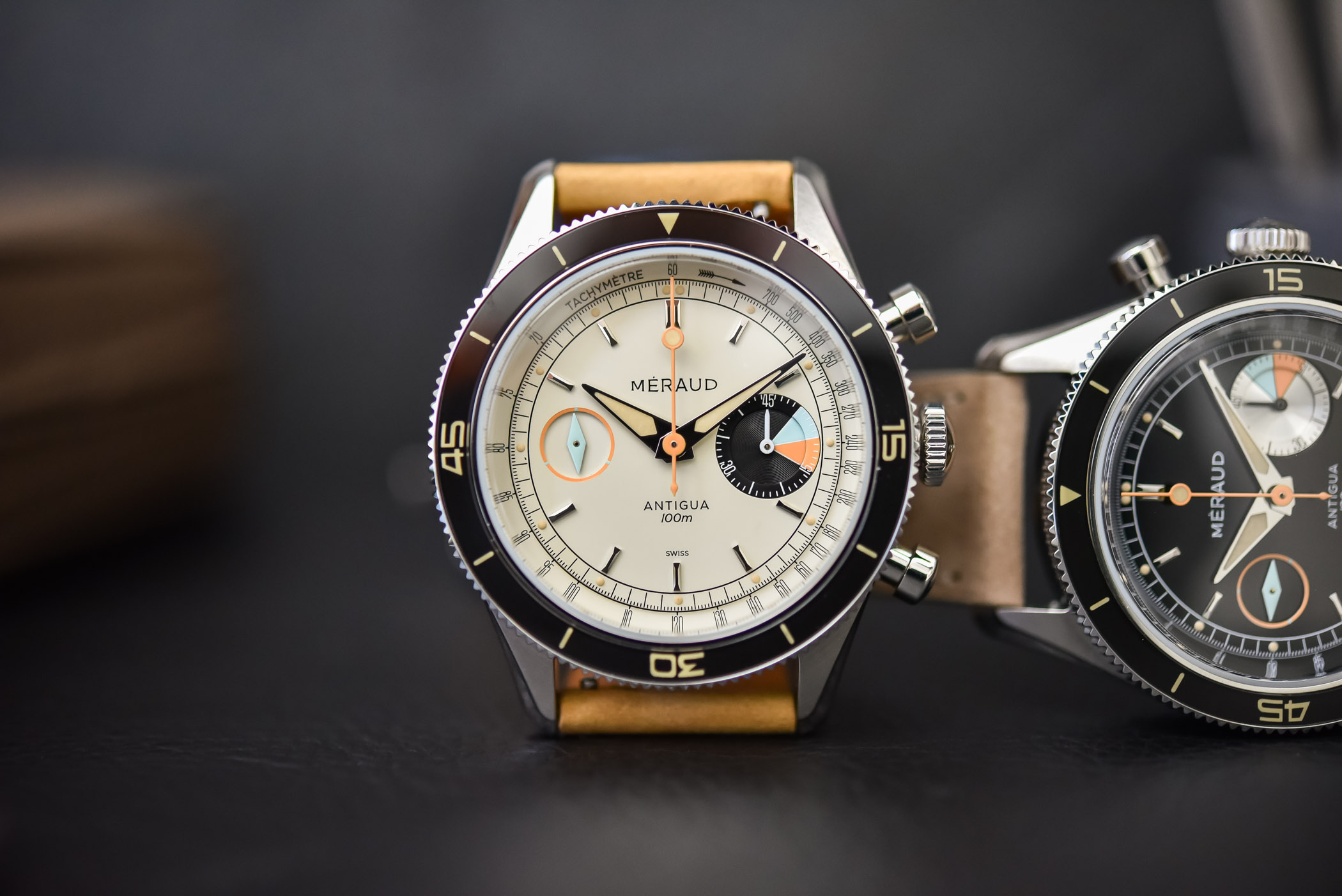
The sapphire crystal with an anti-reflective treatment tops two different dials, though I can not decide which I prefer – the gloss black or the grainy cream, two versions with their own appeal. The dials are two-layer, with a tachymeter scale on the outer ring, pushed to the edge by the legible minutes track. The hour indices are faceted, polished and applied to the dial with lovely corresponding “Old Radium” Super-LumiNova dots on the minute track. The same luminous coating is on the large dauphine-shaped hour and minute hands. The lollipop on the pastel-orange central seconds hand is to shine in the dark, too.
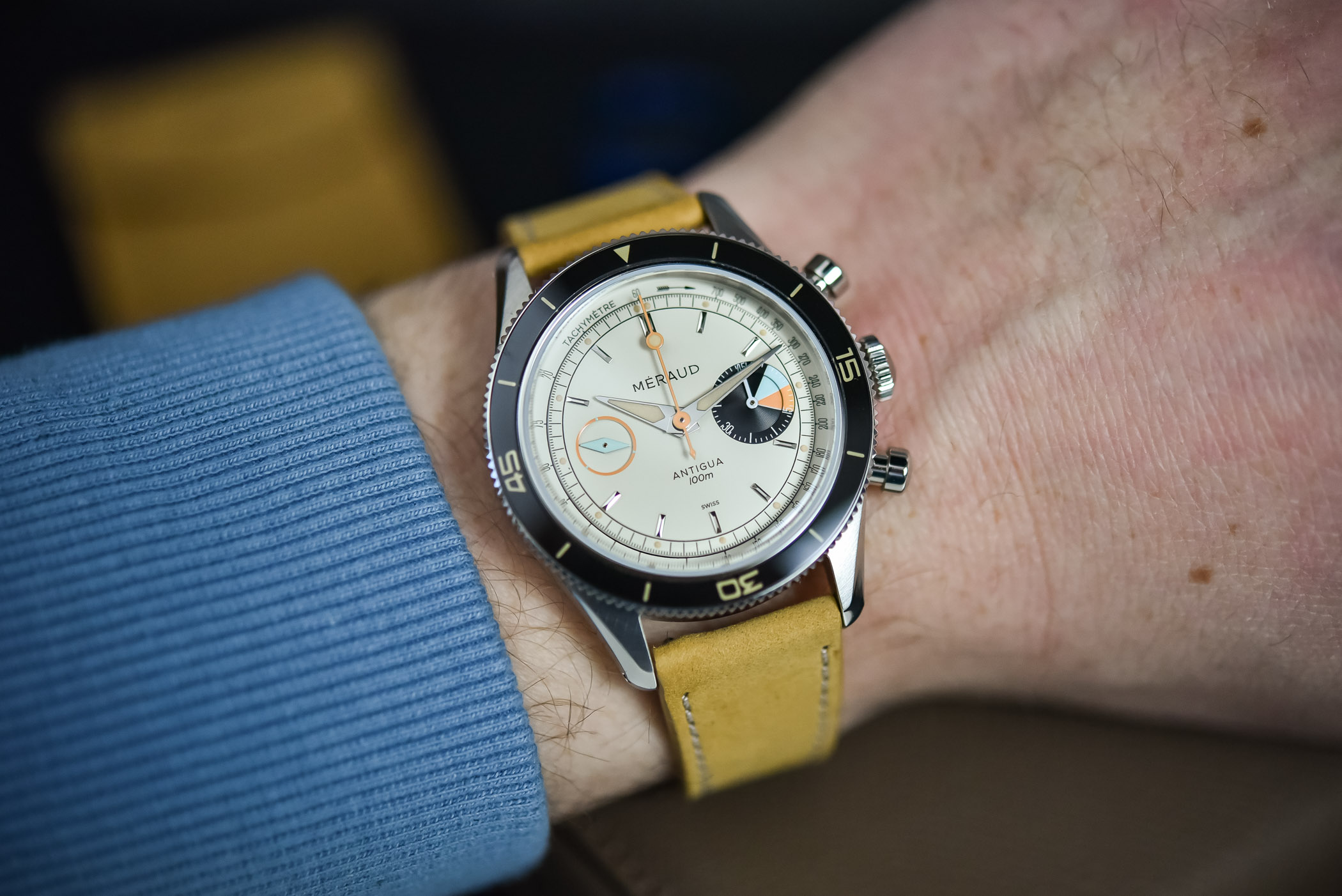
Regatta Dials
The sub-dials are recessed and, at first, may seem designed differently from the rest of the Antigua Chronograph – perhaps on purpose, to bring a contemporary element into the vintage-inspired design. However, the more you look, the better they “age” and blend into the 1960s feel of this watch. The running seconds pastel-blue hand at 9 o’clock has taken the shape of a nautical compass needle, while the big 45-minute counter acts to support the Méraud Antigua’s ultimate purpose – to celebrate the famous Antigua Classic Yacht Regatta, an elegant but challenging competition, the luxurious lifestyle and the event’s racing spirit.
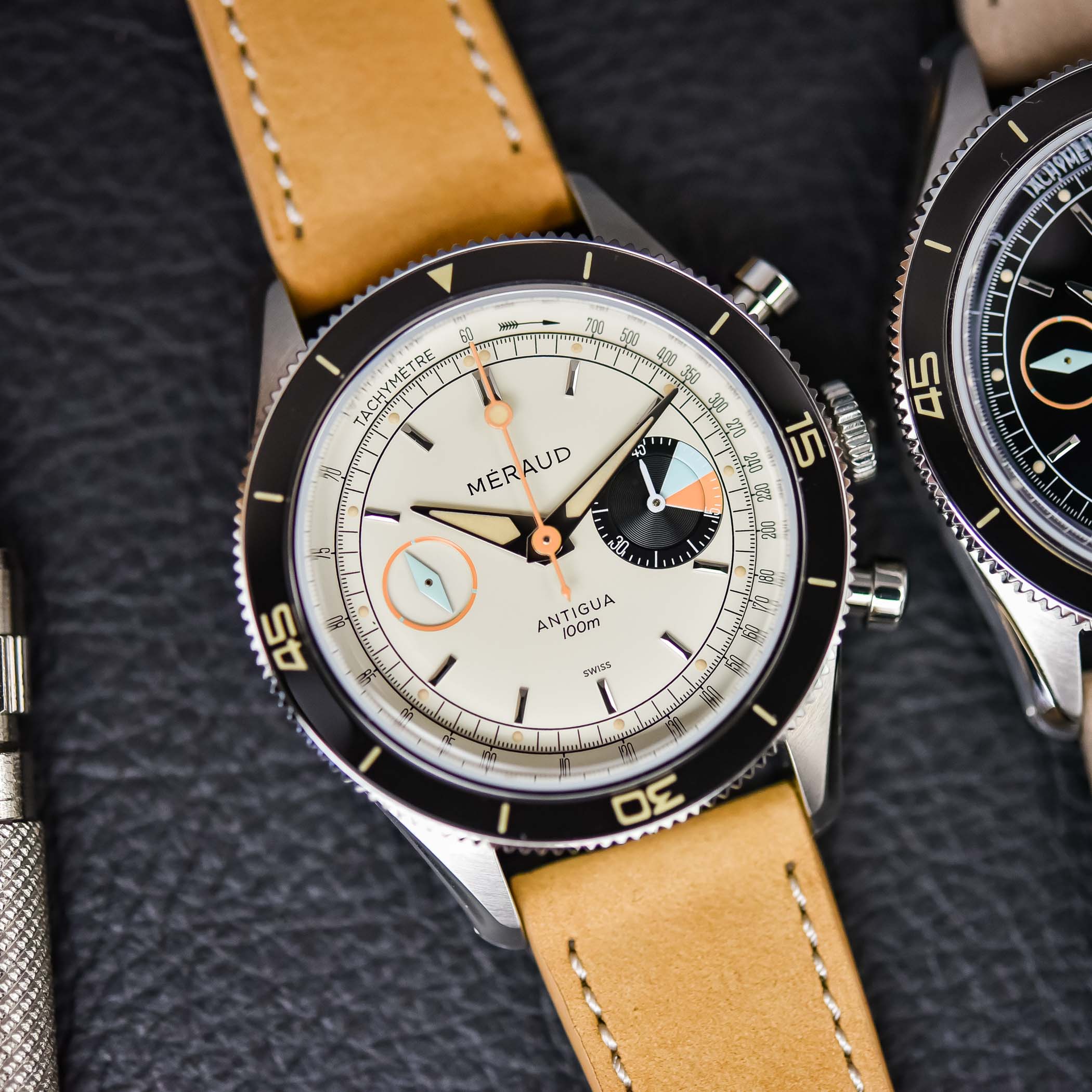
The base colour of the 45-minute counter with a circular finish is either black for the “Soft Sand” version or silvery for the “Miho Black”. The two 5-minute sectors are done in pastel-blue and pastel-orange colours matching the tones already seen on the sub-counter across the dial. The sectors turn the counter into a regatta timer, making the watch a perfect companion for the skipper – and the case is 100m water-resistant, should one find themselves overboard. The regatta timer is just what you need to easily and quickly understand how much time is left before the race begins. It is used to count down the time remaining before the participants are allowed to cross the start line – an imaginary straight line between two buoys. Sailing yachts cannot, like racing cars, stand at the start waiting for a signal. They have to manoeuvre, trying to take the most advantageous position constantly. Usually, the call to begin such manoeuvres is given five minutes before the start.
The Méraud Antigua Chronograph is a very nice watch with a well-thought-through design and delicate touches all around. Like the leather strap made of top-grain buffed nubuck by a Brussels strap maker Molequin, paired with a tropical rubber strap – easily interchangeable. A stainless steel bracelet is available separately if you wish to add weight to your new possession.
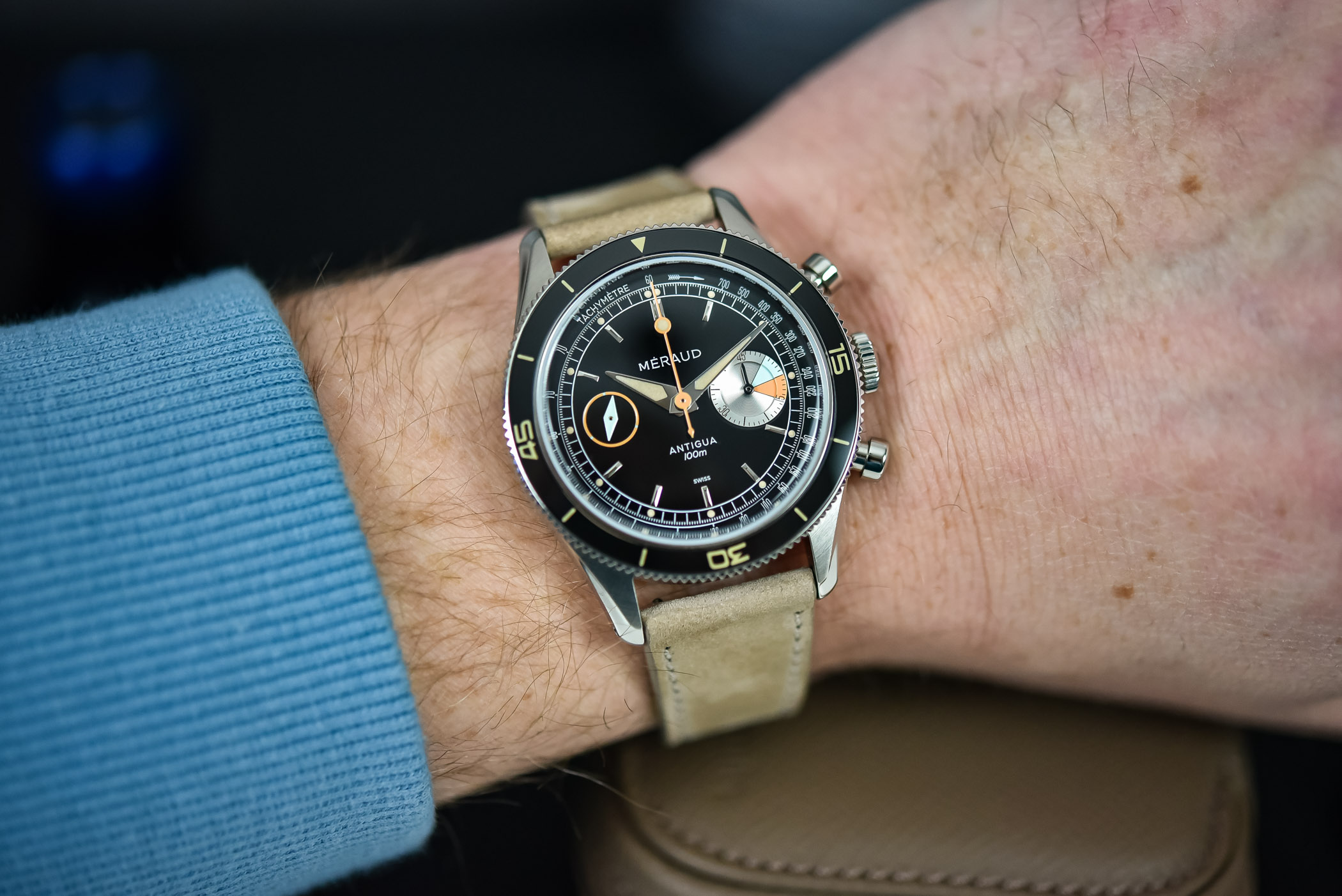
Availability & Price
The Méraud Antigua Chronograph will be produced in a limited series of 100 pieces per dial option, a limitation forced by the quantity of Landeron 248 movements sourced. The asking price is EUR 1,750, taxes excluded. Is the watch worth it? Hell, yeah, raise the sails!
For more information or to pre-order, please visit www.meraud-watches.com.
https://monochrome-watches.com/meraud-antigua-chronograph-new-old-stock-landeron-248-movement-hands-on-review-price/

